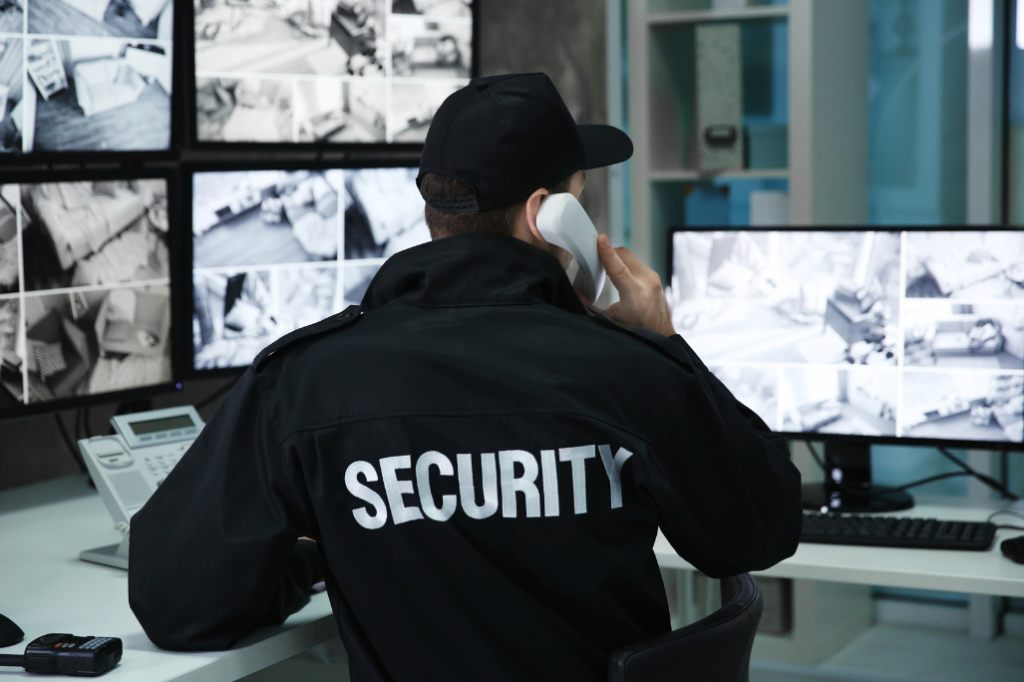No matter what type of business you run, safety always comes first. Modern security depends on more than one layer of protection. Video surveillance, access control, and smart monitoring now work together to keep buildings secure. At ROS Electric, we design and install customized security systems that combine these tools into one reliable solution.
When choosing between a centralized and decentralized surveillance system, the proper setup depends on your site layout, network strength, and the level of control required. Here’s what to know before deciding which fits your business best.
What is a Centralized Surveillance System?

A centralized system sends all camera footage to a single recording point, such as a Network Video Recorder (NVR) or Digital Video Recorder (DVR). Cameras act as the eyes, while the main server does the processing and storage.
These systems are well-suited for environments that require continuous monitoring and straightforward storage, such as offices, schools, or hospitals. Maintenance is easy since everything is connected to a single central hub.
The drawback is that if the central server fails, the entire system stops recording until it’s repaired, which poses a significant risk for large facilities. That’s why ROS Electric often integrates redundant storage options or hybrid cloud backups to reduce downtime and data loss.
How Does a Decentralized System Work?

A decentralized surveillance system gives each camera its own processing power and storage. Instead of sending data to one recorder, cameras save video locally or upload it to the cloud.
If one camera fails, the others continue to work. This setup makes it ideal for large properties, parking lots, or multi-building sites. Many IP cameras we install at ROS Electric feature onboard memory, smart analytics, and motion-triggered recording—all designed for efficient, stand-alone performance.
Decentralized systems also make expansion easy. Adding new cameras doesn’t mean rewiring an entire building. Just connect, configure, and the system is ready.
Comparing Costs and Installation Needs
Centralized systems often require more cabling, setup time, and a robust server. This increases initial cost but simplifies management later.
Decentralized systems are faster to install and scale. Each camera connects to your network without a single point of failure. However, managing updates or maintenance may take longer if you don’t use centralized software.
ROS Electric helps clients strike a balance between efficiency and control, ensuring their surveillance setup supports both day-to-day operations and future expansion.
Bandwidth, Storage, and Performance
Centralized systems rely heavily on network bandwidth. High-resolution video from multiple cameras can overload the connection, causing lag or dropped frames.
Decentralized systems reduce this load by processing video at the camera level. Many use smart compression or record only when motion is detected, saving storage and maintaining smooth performance.
For high-traffic sites, we often design hybrid systems that combine local camera storage with centralized monitoring, delivering reliable performance without overwhelming your network.
Security, Redundancy, and Access Control
Centralized systems make it simple to secure footage in one location, but that also means one target for cyber or hardware failures. Decentralized systems spread risk, storing data across multiple devices.
At ROS Electric, we strengthen both setups with secure access control, encrypted data paths, and multi-layer authentication. For businesses that require controlled entry and surveillance integration, such as schools, warehouses, or office parks, we integrate access control panels with video feeds for real-time verification.
Which System Fits Your Business Needs?
Choosing between centralized and decentralized surveillance depends on your building layout, data needs, and security goals:
- Centralized systems are best suited for single-site facilities that require unified management.
- Decentralized systems are ideal for properties spread across multiple locations or those that require independent recording.
- Hybrid systems combine both, offering flexibility, backup, and control.
Our team evaluates your site to design a plan that fits your goals, network capacity, and budget.
Making the Right Choice for Lasting Protection
ROS Electric designs and installs surveillance systems tailored to meet real-world needs. Whether you need centralized control for a corporate facility or flexible decentralized coverage for multiple locations, our team can help you choose, install, and maintain the best system for your space.
Contact ROS Electric today to learn more about tailored surveillance system solutions that keep every corner of your property secure.


Write a Comment